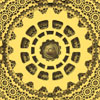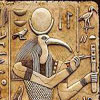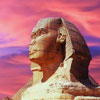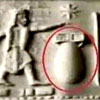The Enigma Of Ancient Technology ~ Part I
 by David Hatcher Childress
by David Hatcher Childress
As we acquire knowledge,
things do not become more comprehensible,
but more mysterious.
-Will Durant
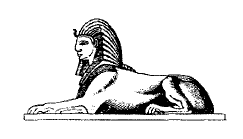 I think, myself that in 1903, we passed through
I think, myself that in 1903, we passed through
the remains of a powdered world left
over from an ancient interplanetary dispute,
brooding in space….
-Charles Fort
Was the Science of Egypt Inherited from an Earlier Culture?
In my searches for lost cities and mysteries of the past, I have often found clues to the technology of the ancients. These clues can be in the form of depictions of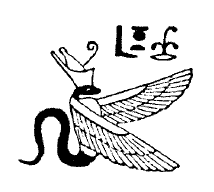 ancient devices in rock paintings or carvings (such as the electric devices at the Temple of Hathor in Egypt) or as small models of devices (such as the miniature solid gold airplanes at the Bogota Gold Museum) or in the stories from ancient texts (such as the Ramayana or even the Bible).
ancient devices in rock paintings or carvings (such as the electric devices at the Temple of Hathor in Egypt) or as small models of devices (such as the miniature solid gold airplanes at the Bogota Gold Museum) or in the stories from ancient texts (such as the Ramayana or even the Bible).
I would like to recap some of the evidence for ancient technology and for advanced ancient cultures in the past. What is amazing about the modern world versus the ancient one is that in the modern world, the average citizen has access to advanced technology such as electricity, a personal vehicle, telephone, fax, and computer technology. In the ancient world, high technology was largely denied the masses. In fact it was often used in temples and ceremonies to gain power over people by amazing or terrifying them; this was part of worship and mystery.
The well-kn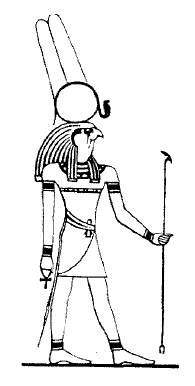 own author and presenter of the television documentary Mystery of the Sphinx, John Anthony West, says:
own author and presenter of the television documentary Mystery of the Sphinx, John Anthony West, says:
Egyptian science, medicine, mathematics and astronomy were all of an exponentially higher order of refinement and sophistication than modern scholars will acknowledge. The whole of Egyptian civilization was based upon a complete and precise understanding of universal laws. And this profound understanding manifested itself in a consistent, coherent and interrelated system that fused science, art and religion into a single organic Unity. In other words, it was exactly the opposite of what we find in the world today.
Moreover, every aspect of Egyptian knowledge seems to have been complete at the very beginning. The sciences, artistic and architectural techniques and the hieroglyphic system show virtually no signs of a period of development; indeed, many of the achievements of the earliest dynasties were never surpassed, or even equaled later on. This astonishing fact is readily admitted by orthodox Egyptologists, but the magnitude of the mystery it poses is skillfully understated, while its many implications go unmentioned.
How does a civilization spring full-blown into being? Look at a 1905 automobile and compare it to a modern one. There is no mistaking the process of ‘development,’ but in Egypt there are no parallels. Everything is right there at the start.
The answer to the mystery is of course obvious, but because it is repellent to the prevailing cast of modern thinking, it is seldom seriously considered. Egyptian civilization was not a ‘development,’ but a legacy.
In his highly rated NBC special of November, 1993, Mystery of the Sphinx, West and his researchers sought to prove that the Sphinx had been severely water worn and was over 10,000 years old!
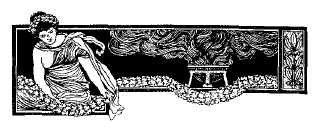 The Destruction of Knowledge
The Destruction of Knowledge
As our technology has gotten more advanced, we have become able to look into the future and into outer space with a view different from that of scientists and thinkers earlier in this century. Similarly, we are now able to look at the past with greater insight and technological know-how. Just as our minds have been able to imagine a future different from that which our grandfathers could envision, we are also able to see a past different from that of the scientists and experts of the turn of the century.
Just as our scope of the universe has been pushed back to the farthest reaches of space, we are now in a position to push back to the farthest reaches of history. And many researchers are doing just that.
Atlantis, with its advanced culture, is named in ancient texts. To begin with, it is mentioned in Plato’s dialogues (taken from ancient Egyptian records according to the text), and nearly every ancient culture in the world has myths and legends of an ancient world-before and the cataclysm that destroyed it.
The Mayans, Aztecs and Hopis believed in the destruction of four or more worlds before our own. The destruction of Atlantis may not even be the most recent cataclysm to befall the earth.
The most widely-known books in the world such as the Bible, the Mahabharata, the Koran and even the Tao Te Ching all speak of cataclysms and ancient civilizations that were destroyed. Ancient civilizations and stories about them filled thousands, even hundreds of thousands of volumes of books that were kept in libraries around the world in ancient times. Many ancient libraries were so huge that they were famous among local historians. The library at Alexandria is a well-known example.
Sadly, it is a fact that throughout history, huge archives and libraries have been purposely destroyed. According to the famous astronomer Carl Sagan, a book entitled The True History of Mankind Over the Last 100,000 Years once existed and was housed in the great library in Alexandria, Egypt. Unfortunately, this book, along with thousands of others, was burned by fanatical Christians in the third century A.D. Any volumes which they might have missed were burned by the Moslems to heat baths a few hundred years later.
All ancient Chinese texts were ordered destroyed in 212 B.C. by Emperor Chi Huang Ti, the builder of the famous Great Wall. Vast amounts of ancient texts–virtually everything pertaining to history, philosophy, and science–were seized and burnt. Whole libraries, including the royal library, were destroyed. Some of the works of Confucius and Mencius were included in this destruction of knowledge.
Fortunately, some books survived because people hid them in various underground caves, and many works were hidden in Taoist temples where they are even now religiously kept and preserved.
The Spanish conquistadors destroyed every Mayan codex that they found. Out of many thousands of Mayan books found by the Spanish, only three or four are known to exist today. Like the fanatical Christian sects of the third century and Emperor Chi Huang Ti in the second century B.C., the conquistadors wanted to erase all knowledge of the past and the records preserving it.
Europe and the Mediterranean were plunged into the infamous Dark Ages when the Christian church first split after a series of church councils, beginning with the council of Nicaea in 325 A.D. The last Patriarch of the early Christian church, Nestorius, was deposed at the Council of Ephesus in 431 A.D. He was banished to Libya and the Nestorian church moved eastward. The dispute concerned the early Christian doctrine of reincarnation and the idea that Christ had a dual nature: Jesus was a Master while Christ was the Archangel Melchizedek.
In the aftermath of this struggle, all books in the Byzantine Empire were ordered destroyed except for a newly edited version of the Bible that the Catholic church was issuing. The library at Alexandria was destroyed at this time, and the great mathematician and philosopher Hypatia was dragged from her chariot by a mob and torn to pieces. The mob went on to burn the library. Thus the suppression of science and knowledge, particularly of the ancient past, began in earnest.
Knowledge has been suppressed throughout the last 2,000 years. It is sometimes said that history is written by the winners of wars, rather than the losers; given the amount of known war-oriented political propaganda still popular as “history” in this century, we should consider much of ancient history in this light.
Given this suppression, it is astonishing that the few ancient texts that have survived do indeed speak of advanced civilizations and the cataclysms that destroyed them. Similarly, they talk of wise people who lived in harmony with the earth and the natural workings of all things. But at some time in the distant past, man fell out of harmony with nature, and a catastrophe struck the whole earth.
We can see here a startling parallel between the ancient Atlantis “myth” and the situation that modern man now finds himself in. Will modern man survive his own technology and tribalism, or will he destroy himself in the natural workings of his destructive practices and disharmony with the earth?
I have had a good many more uplifting thoughts,
creative and expansive visions while soaking in comfortable baths
in well-equipped American bathrooms
than I have ever had in any cathedral.
-Edmund Wilson
Ancient Sanitation: Bathrooms of the Gods
It has been said that the mark of any advanced civilization is the level of their sanitation and plumbing. Nice bathrooms and toilets are important conveniences. Plumbing and sanitation are themselves the offshoots of the science of irrigation, something that developed at least 25,000 years ago.
Over three thousand years ago the Nabateans, an Arab people, maintained six flourishing cities in Israel’s desolate Negev area, including the famous Petra. By utilizing an ingenious system of terraces and walls, these engineer-farmers managed to till the soil on an average rainfall of four inches a year. “The more one examines the Nabateans’ elaborate systems, the more impressed he must be with the precision and scope of their work… They anticipated and solved every problem in a manner which we can hardly improve upon today.” (Scientific American, April, 1956)
Some 3,000 years ago the ancient Persians discovered a method of digging underground aqueducts that would bring mountain ground water to their arid plains. Still extant and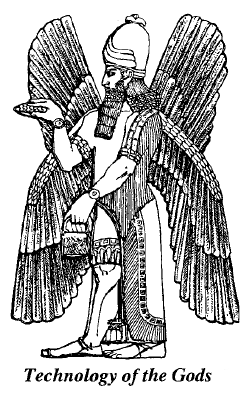 functional, the system of irrigation provides 75 percent of the water used in Iran today. (Scientific American, April, 1968)
functional, the system of irrigation provides 75 percent of the water used in Iran today. (Scientific American, April, 1968)
For centuries, sanitary conditions in Europe were deplorable. The casual treatment of human waste sustained the horrible plagues that nearly decimated the continent on several occasions. But more than 5,000 years ago in the Tigris Valley near Baghdad, Tell Asmar had homes and temples with elaborate arrangements for sanitation. One excavated temple had six toilets and five bathrooms, with most of the plumbing equipment “connected to drains which discharged into a main sewer, one meter high and 50 meters long… In tracing one drain, the investigators came upon a line of earth ware pipes. One end of each section was about eight inches in diameter while the other end was reduced to seven inches, so that the pipes could be coupled into each other just as is done with drain pipes in the 20th Century.” (Scientific American, July, 1935).
Ancient man made tunnels through mountains for irrigation purposes and sometimes built massive dams or other large hydraulic engineering feats. The great dam built by the Queen of Sheba at Marib in Yemen is a good example. Huge hydraulic works of ancient man, hitherto unknown, are just coming to light. The Sri Lankan archaeologist A. D. Fernanado in an article in the Journal of the Sri Lanka Branch of the Royal Asiatic Society (1982) relates the incredible discoveries made when Sri Lankan engineers wanted to place a dam at Maduru Oya, thereby drowning a large valley. As the bulldozers set to work they began to scrape against bricks which already lay in the ground. To everybody’s amazement, it turned out that prehistoric engineers had made the same calculations and had built a dam at the very same spot!
Norwegian archaeologists visited the site and reported that the grandeur of these prehistoric megalithic waterworks would have impressed a Pharaoh. Thor Heyerdahl says that much of the water system was constructed out of 15 ton blocks of stone 33 feet high and arranged in the shape of square tunnels and brick walls. The dams had sluices measuring more than 6 miles in length to control the water flow to a series of artificial lakes. Millions of tons of water had been regulated by this huge and sophisticated dam.
It was thought by historians a hundred years ago that since nomadic tribes had no formal bathrooms or sewage disposal, everyone must have lived that way. Nomadic tribes often packed up their tents and moved on when the garbage and sewage was just too much to take. Cities, however, are more difficult to just up and move. It was thought by early British archaeologists that ancient man did not use sophisticated sewage and water systems, mainly simply allowing rain water to eventually wash away sewage into a nearby stream or river.
However, many of the bathrooms of the ancient world were very luxurious, with colorful ceramic basins and bathtubs, just as we have today. Reginald Reynolds, in his witty book on ancient sanitation, Cleanliness and Godliness, argues that ancients knew about sewage disposal, but had two or more clearly separated systems:
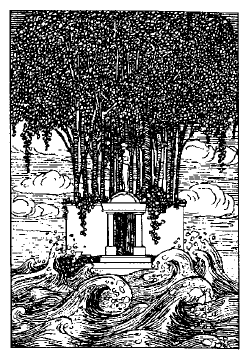 It is the opinion of Mr. Ernest Mackay, the eminent archaeologist, that these drains were not used for the disposal of sewage, and as evidence of this he cites us the “Charaka-Samhita”, a work of the second century A.D., as nearly as can be computed, in which it is said that latrines are intended only for the sick and infirm; and for the rest that a man should proceed a bow-shot from his house to do his business… The waters were suffered on occasion to run down the walls of the house, which he says would have been a noxious custom if these waters had contained sewage. But he omits to remind us that the contrary proposition, which is the absence of sewage disposal, would have been, in a city, even more noxious than an open drain; and since there were both open water-chutes and closed drains in these houses, it were more reasonable to suppose that these two systems served separate purposes, the one to carry off rain water and bath water, the other to dispose of sewage… But this at least is beyond dispute concerning those who inhabited The Mound of the Dead, [Mohnenjo-Daro in Pakistan] that they were possessed of well-appointed bathrooms, together with the system of drainage that I have described …as part of the Sanitary Vanguard of Mankind.
It is the opinion of Mr. Ernest Mackay, the eminent archaeologist, that these drains were not used for the disposal of sewage, and as evidence of this he cites us the “Charaka-Samhita”, a work of the second century A.D., as nearly as can be computed, in which it is said that latrines are intended only for the sick and infirm; and for the rest that a man should proceed a bow-shot from his house to do his business… The waters were suffered on occasion to run down the walls of the house, which he says would have been a noxious custom if these waters had contained sewage. But he omits to remind us that the contrary proposition, which is the absence of sewage disposal, would have been, in a city, even more noxious than an open drain; and since there were both open water-chutes and closed drains in these houses, it were more reasonable to suppose that these two systems served separate purposes, the one to carry off rain water and bath water, the other to dispose of sewage… But this at least is beyond dispute concerning those who inhabited The Mound of the Dead, [Mohnenjo-Daro in Pakistan] that they were possessed of well-appointed bathrooms, together with the system of drainage that I have described …as part of the Sanitary Vanguard of Mankind.
Sir G. Maspero, sometime Director-General of the Service of Antiquities in Egypt, spoke highly of the excellent hygienic and sanitary arrangements known in ancient Egypt, particularly of the elaborate bath discovered at Tell el-Amarna, in the house of a high official of the Eighteenth Dynasty. And he observes that in the midst of their paved streets they provided a channel of stone to carry off water and drainage. And in this same bathroom at Tell el-Amama there was discovered a well-preserved closet behind a screen wall, this closet being provided with a seat of limestone, elegantly shaped.
It was the opinion of Herodotus that the Egyptians were of all nations the most healthy; for he found them distinguished from other peoples by the singularity of their institutions and their manners. Reynolds tells us that “the Egyptians also (like the Pythagoreans, who imitated them) abstained from beans, which they held to be unclean, for which I can give no good explanation; though some say that Pythagoras was in this matter misunderstood by Aristotle.” People were already avoiding beans, five thousand years ago.
As to Egyptian toilets, Reynolds says that they preferred the “composting” type of toilets:
[T]hey used earth rather than water for the most part, we have yet to see whether we are wiser than the Pharaohs; for sanitation is not to be confused with any popular notion or prevalent system, but must be considered in relation to the best and most expeditious disposal of sewage, the abatement of nuisances and causes of infection, the fertility of the soil, and many other matters, such as the climate and the means at human disposal. But we know from these general observations that the priest-physicians who directed the public hygiene of Egypt found cleanliness next to godliness, and were concerned to keep at least the upper-class quarters of their cities wholesome.
The Egyptians knew even the art of making drains of hammered copper, of which one was found, fully 450 yards in length, at the temple of Sahara, though this drain served only for rain water. And that their supply of water was considered a matter of great importance, for the attention of the highest officer of the State, we know from an inscription concerning the duties of the Vizier under the Eighteenth Dynasty. For this inscription says of the Vizier, ‘It is he who dispatches the official staff to attend to the water supply in the whole land’; and again the inscription reads that ‘It is he who inspects the water supply on the first of every ten-day period.’
William Corliss reports in his Science Frontiers newsletter (No. 123, May/June 1999) that the ancient Egyptians not only had advanced toilets and bathrooms, but also applied cosmetics copiously to themselves. Upper-class women, as well as many men, favored green, white, and black makeup. These cosmetic powders, dating from 2000 B.C., have been exceptionally well preserved in their original vials made of alabaster, wood or ceramic.
A team of French chemists led by P. Walter was not surprised when their analyses of these powders found crushed galena and cerussite (two ores of lead). However, they nearly dropped their test tubes when they also found chemical compounds that are extremely rare in nature; specifically, laurionite (PbOHCl) and phosgenite (Pb2C12C03). In fact, these compounds are so rare naturally that the Egyptian powders must be artificial.
P. Walter et. al. wrote: “Taken together, these results indicate that laurionite and phosgenite must have been synthesized in Ancient Egypt using wet chemistry. The Egyptians 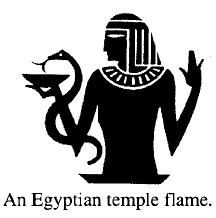 manufactured artificial lead-based compounds, and added them to the cosmetic product. The underlying chemical reactions are simple, but the whole process, including many repetitive operations, must have been quite difficult to achieve.
manufactured artificial lead-based compounds, and added them to the cosmetic product. The underlying chemical reactions are simple, but the whole process, including many repetitive operations, must have been quite difficult to achieve.
“It had been recognized earlier that the Egyptian chemists had used fire-based technology 500 years earlier in 2500 B.C. to manufacture blue pigment. Wet chemistry represented another forward technological step.” (Nature, No. 397, 1999)
Corliss comments that, “Uncowed by the successes of the ancient Egyptian chemists, those in Nissan have synthesized artificial bird droppings for use in testing automobile paints. The real stuff, you see, is inconsistent from batch to batch.”
Quality bathrooms need good soap, and the very word “soap” comes down to us from the ancient Egyptian word swab. In 1931, the British Egyptologist Dr. Rendel Harris maintained that the words swab and swabber derive from the Egyptian language and are of the greatest antiquity. Wdb, he says, among the Ancient Egyptians signified pure, and from this word he would trace the name of the Wahabis, who are the Puritans of Islam today. Also he says the letter S, expresses causation, so that ankh being the word meaning life, S-ankh signifies to make alive. From this he concludes that, if wdb be pure, S-wdb would be to make pure; that is to say, to cleanse or to swab. And since it was among the opinions strongly held by Dr. Harris that the Egyptians were a great seafaring people, he contends that this word swab came into our language through the ancient intercourse of seamen, whose language may be in parts older than any now spoken in Europe. For the seafaring use of the word he invokes Shakespeare, who wrote of:
The master, the swabber, the boatswain and I…
The seafaring skills of the Egyptians were considerable, and it is beyond dispute that they had great fleets of ships. Apparently swabbing the deck comes from ancient Egyptian and our word soap is derived from swab: “that which makes clean.”
Proper hygiene, sanitary water, soaps and sewage disposal are all necessary for any technological civilization to advance forward. When it comes to the technology of the Gods, cleanliness is next to godliness.
Many of Today’s Inventions Were Yesterday’s Inventions
The ancient Greeks built steam boilers that worked, but they used them only as gadgets and toys rather than as practical sources of power. One such toy was a sphere that was spun by two steam jets, and was “invented” in Ptolemaic Greek Egypt circa 200 B.C.
Also, in the second 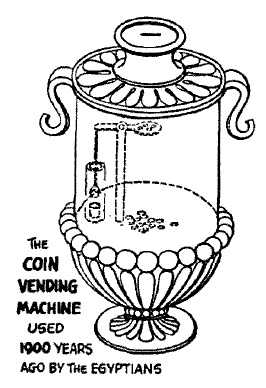 century before the Christian era, Egyptian temples had slot machines for holy water. The quantity of water which flowed from the tap was in direct relation to the weight of the coin thrown into the slot. The temple of Zeus in Athens had a similar automatically-controlled holy water dispenser. A coin was dropped into a sealed vessel which made a small plunger pull up, which then allowed a measured quantity of fluid to be dispensed. The famous Greek/Egyptian inventor Hero of Alexandria invented one such well-known device in 120 B.C. It is evident from this example that temples and priests were involved in technology at an early time.
century before the Christian era, Egyptian temples had slot machines for holy water. The quantity of water which flowed from the tap was in direct relation to the weight of the coin thrown into the slot. The temple of Zeus in Athens had a similar automatically-controlled holy water dispenser. A coin was dropped into a sealed vessel which made a small plunger pull up, which then allowed a measured quantity of fluid to be dispensed. The famous Greek/Egyptian inventor Hero of Alexandria invented one such well-known device in 120 B.C. It is evident from this example that temples and priests were involved in technology at an early time.
Many of the common inventions of the modern world–steam engines, clocks, vending machines, hydraulic pumps, etc.–were all known in the ancient world. Finely made instruments and tools such as the Antikythera device were common in ancient times, but archaeologists are always surprised to discover them!
Gynecology was an unknown science until the latter half of the nineteenth century. Then, according to the October 20, 1900, issue of Scientific American, excavations at Pompeii 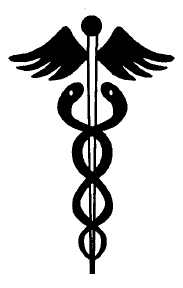 revealed gynecology to be but a “reinvention in the world of surgery.” Instruments buried in the Temple of Vestal Virgins since the eruption of Vesuvius in A.D. were found to demonstrate that “gynecology was a science flourishing in its perfection long before that date… in every instance the instruments are almost in their minutest particulars exact duplicates of those in use by the most approved modern science of today… The workmanship is as fine as anything to be produced in this line in the twentieth century. The instruments are hand wrought, the screws as threadlike and capable of delicate manipulation as anything to be found in today’s achievements.”
revealed gynecology to be but a “reinvention in the world of surgery.” Instruments buried in the Temple of Vestal Virgins since the eruption of Vesuvius in A.D. were found to demonstrate that “gynecology was a science flourishing in its perfection long before that date… in every instance the instruments are almost in their minutest particulars exact duplicates of those in use by the most approved modern science of today… The workmanship is as fine as anything to be produced in this line in the twentieth century. The instruments are hand wrought, the screws as threadlike and capable of delicate manipulation as anything to be found in today’s achievements.”
Shipwrecks around the Mediterranean give us an idea of the machines that the ancient Greeks, Romans and other Mediterranean maritime cultures possessed. The July 27, 1959, issue of Chemical Engineering had an article about an 80-pound valve that had been salvaged from one of Emperor Caligula’s yachts. The valve was made of a zinc-free, lead-rich, anti-corrosion, anti-friction bronze.
Said the article, “The Caligula valve was found submerged at the bottom of Lake Nemi in Rome. Although 19 centuries old, it still exhibits highly polished surfaces and retains its plug tightly.” While modern fashion and sexual trends may simply mimic those of ancient times, scientists are too often surprised at the high level of technical and scientific knowledge of ancient man.
Becoming familiar with ancient science is a good start for the layman, and two good books that are easily obtainable are Technology in the Ancient World by Henry Hodges and Engineering In the Ancient World by J. Landels. With these books, the science of classical times can be seen to be very similar to our own.
Excerpt from Technology Of The Gods
See Part II here.
Posted in Other Topics, True History of Manwith comments disabled.


